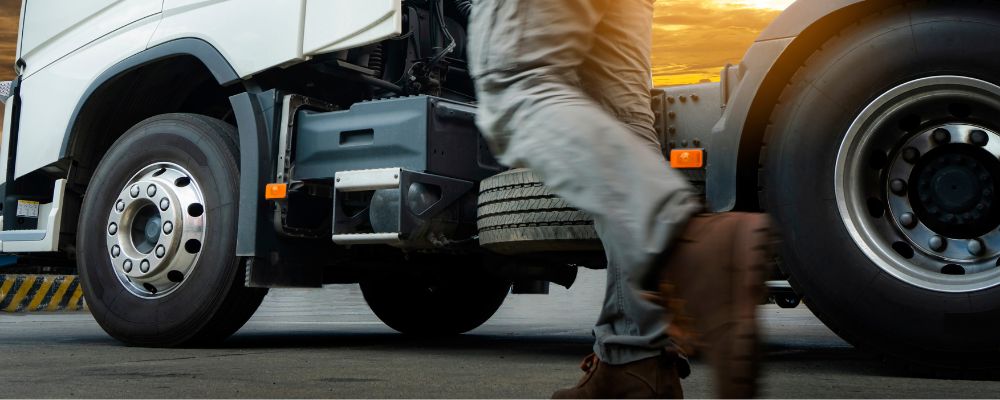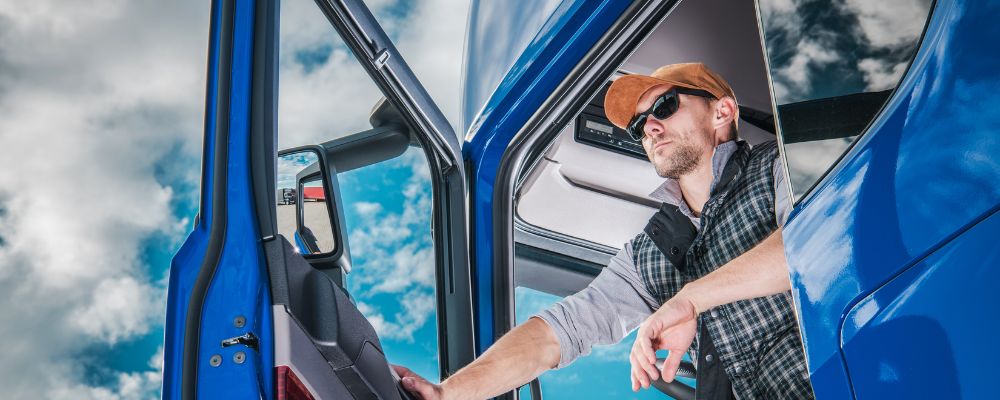The trucking industry is an integral part of the global economy, facilitating the efficient transport of goods across vast distances. The occupation of truck driving, while crucial, involves substantial risks due to factors like heavy traffic, long hours on the road, and diverse weather conditions. It is essential, therefore, to prioritize the safety of truck drivers as well as other road users. This guide introduces the fundamental safety equipment from safety vests to emergency roadside kits that every truck driver should have, emphasizing personal protective gear and tools for emergency preparedness.
Reflective Safety Vests
Reflective safety vests are designed to enhance visibility, making the truck driver conspicuously visible to other road users, particularly under low-light conditions or adverse weather conditions. Such enhanced visibility ensures adherence to safety regulations prevalent across various jurisdictions.
Regulatory Compliance and Standards
In the United States, the Occupational Safety and Health Administration (OSHA) requires all workers to wear high-visibility clothing, including truck drivers, who are exposed to traffic and operational machinery. These regulations align with the American National Standards Institute (ANSI) which provides detailed classifications based on the environmental risks associated with different work zones.
Choosing the Right Vest
Reflective vests are categorized into classes designed to meet the requirements of varying risk exposures:
- Class 1 vests are tailored for environments where traffic speeds do not exceed 25 mph, such as in residential areas.
- Class 2 vests are necessary for more congested areas where vehicle speeds are likely between 25 and 50 mph, typical of urban settings or road construction zones.
- Class 3 vests offer the highest level of visibility and are mandatory in extremely hazardous conditions, like those found on highways where speeds exceed 50 mph.
Additional Features and Maintenance
Reflective vests may also feature design elements like breakaway configurations to prevent snagging on equipment, or integrated storage pockets for carrying essentials. Materials range from lightweight, breathable fabrics suitable for prolonged wear. Regular maintenance, including routine cleaning and checks for any reduction in reflectivity, is crucial to ensure ongoing compliance and safety effectiveness.

Hard Hats
Hard hats are critical gear for drivers engaged in loading, unloading, or maintenance tasks, where the risk of head injuries from falling or flying objects is significant.
Importance and Regulatory Requirements
In several regions, wearing a hard hat is both a safety precaution and a legal requirement. ANSI Z89.1 Standard specifically dictates the necessity for proper head protection and regulates its use in any environment where there are risks to the head.
Choosing the Appropriate Hard Hat
Hard hats are classified to address different safety needs:
- Class G (General) hard hats provide good impact protection and limited voltage protection.
- Class E (Electrical) are designed to safeguard against electrical hazards up to 20,000 volts.
- Class C (Conductive) hard hats, while offering no electrical protection, provide better comfort due to the ventilated design.
The selection of a hard hat should be based on the specific hazards identified within the work environment.
Proper Usage and Maintenance
For optimal protection, hard hats must be properly fitted and maintained. The helmet should sit snugly, without slipping or tilting. Regular inspections for any signs of damage, such as cracks or dents, are vital. Hard hats compromised by significant impacts or electric shocks should be replaced immediately to maintain protective integrity.

Steel Toe Work Boots
Steel-toe work boots are designed to protect workers' feet from severe injuries caused by heavy falling objects, sharp materials, and other occupational hazards. These boots feature a robust steel cap over the toe area, engineered to withstand significant forces. This design effectively safeguards truck drivers from potentially crippling foot injuries. In the transportation and logistics sectors, the wearing of steel-toe boots is mandated under OSHA standards.
Features of High-Quality Steel Toe Boots
When selecting steel-toe boots, drivers should consider several key attributes to ensure maximum protection and comfort:
- Durability and Material: High-quality boots are usually crafted from durable leather or advanced synthetic materials that offer long-lasting wear and weather resistance.
- Protection Features: These boots often include additional safety features such as puncture-resistant soles and electrical hazard protection, encompassing a comprehensive safety approach.
- Comfort and Support: Given that truck drivers spend extensive hours on feet. Boots with excellent arch support, cushioned insoles, and breathable lining are recommended for reducing fatigue and enhancing comfort.
- Slip Resistance: Boots with oil and slip-resistant outsoles prevent slips and falls in various working environments.
Maintenance and Care
Routine inspections for damage or excessive wear and timely replacement after significant impacts are essential practices to maintain safety capabilities.

Safety Glasses
Clear and protected vision is crucial for truck drivers, especially when performing tasks like vehicle maintenance or securing loads under windy conditions. Safety glasses serve as a vital protection against hazards such as flying debris, dust, and chemical splashes, effectively preventing eye injuries in these situations.
Features of Safety Glasses
- Impact Resistance: Constructed with materials that resist shattering upon impact, these glasses protect against high-speed particles or debris.
- UV Protection: Many safety glasses provide UV protection to shield the eyes from the sun's harmful rays, beneficial for drivers who are frequently exposed to prolonged sunlight.
- Polarization: Polarized lenses reduce glare from reflective surfaces, significantly improving visual clarity and reducing eye strain during lengthy drives.
- Prescription Options: Prescription safety glasses are available for drivers with vision impairments, combining necessary corrective measures with standard safety features.

Work Gloves
Safety work gloves protect truck drivers against various hazards such as abrasions, cuts, and exposure to the elements, which are common in trucking and related activities.
Choosing the Right Gloves
Truck drivers should choose the types of safety gloves that align with their specific tasks:
- Canvas Work Gloves: Ideal for general duties, providing robust protection against abrasions during tool and equipment handling.
- Leather Work Gloves: Offering superior dexterity and protection, these gloves are perfect for intricate tasks like fueling or mechanical checks.
- Cold Weather Gloves: Essential for drivers in colder regions, these insulated gloves keep hands warm and functional, maintaining safety and efficiency in adverse weather conditions.
Features to Consider
- Durability and Material: High-quality materials are crucial for gloves to withstand daily wear and provide effective protection.
- Fit and Comfort: Well-fitting gloves enhance comfort and safety, allowing for optimal hand mobility and reducing the risk of accidents due to slipping or inadequate grip.
- Weather Resistance: Gloves designed for specific environmental conditions, such as waterproofing or insulation, are essential based on the driver's geographic area of operation.
- Grip: Effective grip is crucial to safely handle tools and maintain control over the vehicle and other equipment.

Emergency Roadside Kit
Given the long hours on the road and the potential for mechanical failures or accidents, having a well-prepared kit can make a significant difference in safety and the ability to handle unexpected situations for truck drivers.
Types of Emergency Kits
- Warning Devices: Items such as reflective triangles, flares, and LED flashlights or strobe lights are critical. It ensure that other drivers are aware of your presence, reducing the risk of accidents while you are parked roadside.
- First Aid Kit: A comprehensive first aid kit should include a variety of bandages, antiseptic wipes, antibiotic ointment, and gloves—essentials for addressing minor injuries or stabilizing more serious conditions until professional help can arrive.
- Tools and Repair Items: The kit should include basic tools like screwdrivers, pliers, a wrench set, and duct tape. Additionally, a tire pressure gauge, jumper cables, and a portable battery pack or lithium-ion battery are indispensable for addressing common vehicular issues.
- Survival Supplies: For those traversing through cold climates or remote areas, non-perishable food items, water, warm clothing, and blankets are required. Consider including energy bars, bottled water, thermal blankets, and even a sub-zero sleeping bag for extreme conditions.
- Additional Safety Gear: A fire extinguisher is crucial for minimizing fire hazards, especially for drivers hauling hazardous materials, as it can help contain fires at the initial stages.
Maintenance and Accessibility
Regular maintenance of your emergency kit ensures all tools are in working order and ready for use. Check that tools function properly, first aid supplies are within the expiration dates, and that electronic items like flashlights and battery packs are fully charged. Keep the kit in a readily accessible location within your vehicle to ensure quick access in emergencies.

Conclusion
Truck drivers may encounter unique challenges and hazards during the routes, necessitating additional safety measures tailored to the industry's specific demands. A strategic approach to safety, which includes equipping each truck with essential tools and emergency kits, prepares drivers for almost any situation drivers might encounter. From enhancing visibility with reflective safety vests to addressing potential fires with fire extinguishers, each component of the safety arsenal plays a vital role in mitigating specific hazards.
Regular updates and training on the use of these tools are equally crucial. Drivers should be proficient in the use of equipment, ensuring respond swiftly and effectively in crises. By incorporating these safety measures, truck drivers can not only protect themselves but also contribute to safer roadways for everyone.
FAQ
What is the essential safety equipment every truck driver should carry?
Every truck driver should carry items such as a reflective safety vest, safety gloves, safety glasses, a hard hat, safety boots, and an emergency roadside kit. The equipment ensures preparedness for mechanical or medical emergencies and enhances safety and visibility on the road.
How can a reflective safety vest make a difference in truck driver safety?
A reflective safety vest significantly increases a truck driver’s visibility to other road users, particularly in low-light conditions. This enhanced visibility is crucial for preventing accidents and ensuring the driver’s safety during roadside emergencies.
How often should safety equipment in trucks be inspected or replaced?
Safety equipment should be inspected regularly and maintained properly. For instance, fire extinguishers require annual servicing, while items in first aid kits and emergency roadside kits should be checked every few months to replace any used or expired items, ensuring kits are always ready for use.





